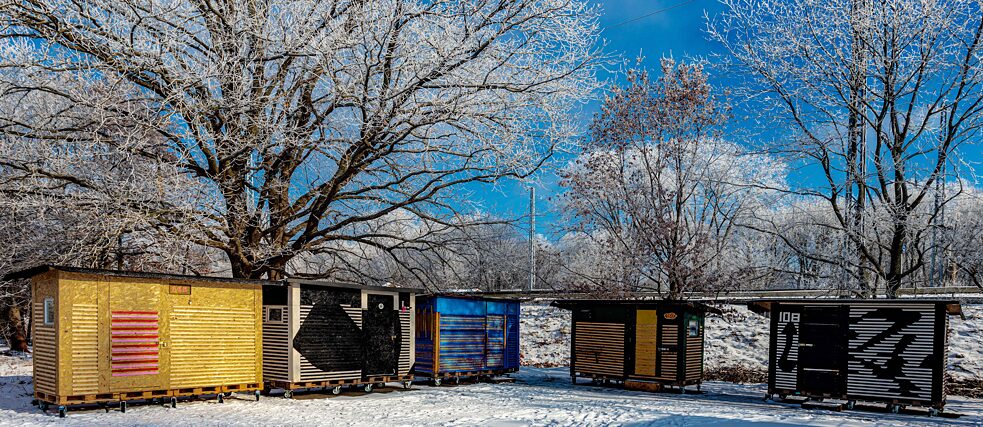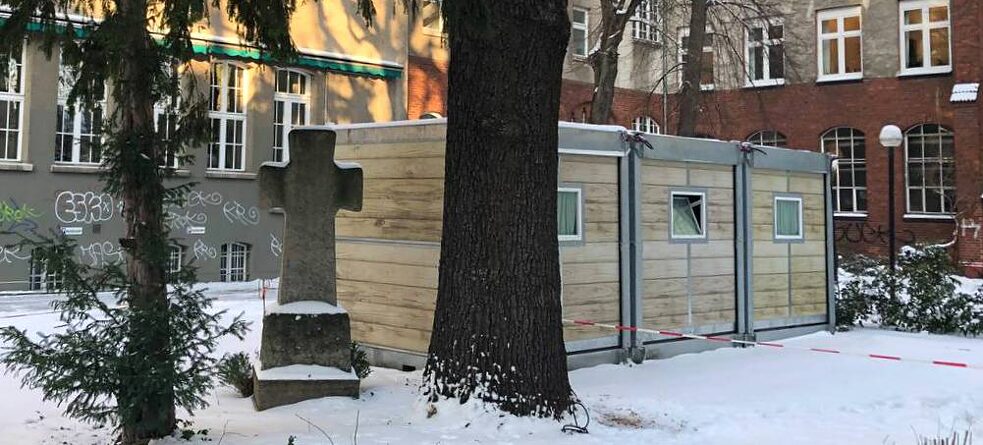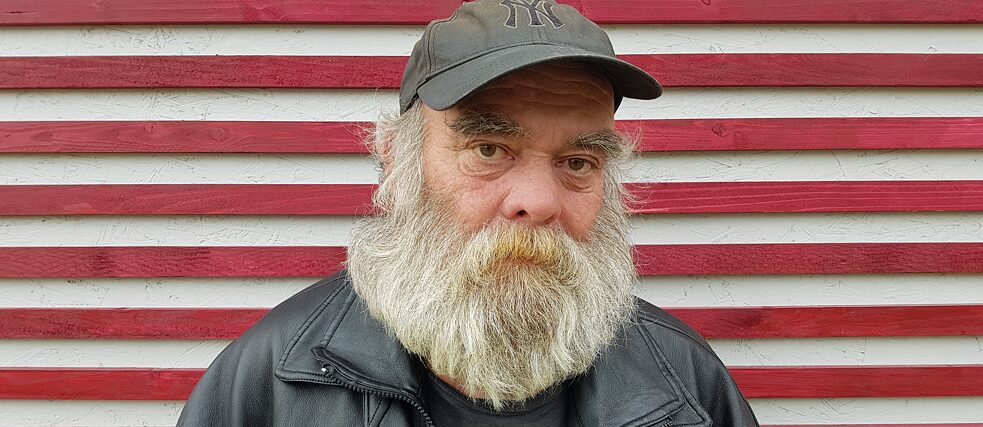Homelessness
Housing on a trial basis

Some German initiatives are producing mini-houses for homeless people: What benefits will they bring and where will be limitations?
Anyone who has ever been truly waterlogged in a tent at a festival will really appreciate the service provided by Berlin based start-up My Molo: compact mobile homes fitted out with basic essentials offer their party-loving inhabitants protection from the weather and some privacy on the festival site. But what happens to them at the end of the season? In 2016, Nico Marotz and Fritz Ramisch had the idea of providing their “lodges”, as they call them, as winter accommodation for homeless people in collaboration with Kältehilfe Berlin (Cold Aid) and chaplain for the homeless Wolfgang Willsch.
 Built for open-air summer festivals, the “lodges” provided by My Molo serve as winter accommodation for homeless people.
| Photo (detail): © My Molo
Built for open-air summer festivals, the “lodges” provided by My Molo serve as winter accommodation for homeless people.
| Photo (detail): © My Molo
According to estimates by the Bundesgemeinschaft Wohnungslosenhilfe (Federal Working Group on Homeless Aid), there are around 52,000 homeless people in Germany. These people are exposed to a great risk in winter – the risk of freezing to death. In Berlin alone at least 20 homeless people froze to death during the winter months 2020-2021. For winter 2021-2022, My Molo has installed eleven lodges in Berlin: three on the Caritas site and eight at St. Pius’ Church in Berlin’s Friedrichshain district. Each lodge has an area of 7.5 square metres and provides a bed, cupboard and heating. It costs 220.00 euros a month per lodge to cover installation and dismantling, transport and logistics, maintenance, insurance, power and charges. The project is funded by donations. “Our living concept promotes self-esteem and personal responsibility, and, ideally, offers real prospects for the future on the way back to the social systems,” say the initiators.
Little home, huge demand
But the idea of tiny houses for homeless people came from someone else: in 2016 Sven Lüdecke started up his business Little Home in Cologne. An encounter with a homeless person inspired him to build a box for living. Word soon got round that he was committed to the cause, and today his organisation is churning out the tiny houses virtually back-to-back.
They are 3.2 square metres in area and consist of chipboard, PVC flooring, polystyrene, a door and two tilt-opening windows. As well as a mattress and shelf you will find a first aid kit, fire extinguisher, camping toilet, wash handbasin and a small worktop with cooking facility inside. The shelter, which is always gifted to a homeless person, costs 1,050 euros. Support might come for instance from the Caritas Foundation or larger companies, but most of the donations come from the private sector. In addition to Cologne, Little Home is now represented in other cities such as Berlin, Frankfurt and Hamburg. Prospective residents are required to meet stringent criteria: not too much alcohol, no drugs and plenty of motivation to get off the streets. Nevertheless demand is huge: there are over 15,000 people on the waiting list.
 The inside of a Little Home: They are 3.2 square metres in area and are equipped with a mattress, shelf, first aid kit, fire extinguisher, camping toilet, wash handbasin and a small worktop with cooking facility.
| Photo (detail): © Little Home
The inside of a Little Home: They are 3.2 square metres in area and are equipped with a mattress, shelf, first aid kit, fire extinguisher, camping toilet, wash handbasin and a small worktop with cooking facility.
| Photo (detail): © Little Home
Local authorities are responsible
But there is public criticism of concepts like this, for example that accommodating people in these miniature homes is inhumane, or not safe enough because they are not compliant with minimum accredited standards for emergency housing. Apart from that, the Federal Working Group on Homeless Aid feels that the local authorities are absolved of their responsibility as a result of the private initiatives. In Germany they are bound by law to house people in a humane manner, and they should be put under pressure to fulfil their duty to provide accommodation.
But this is unlikely to happen overnight, Lüdecke knows that, und and that’s why he views his Little Homes as a springboard: “Thanks to the experience Little Home was able to gather within those first few years, one thing is now clearer than ever: the living boxes have an impact on people! Admittedly they are just an initial step back into society – but it’s a crucial step. Maybe it’s a kind of trial period, a little oasis en route to further resocialisation.” The numbers support this theory: around 190 mini-houses in 21 cities have so far been constructed and prepared for new occupants by Little Home. 133 Little Home residents have already been able to move into their own flats, of whom 127 people have found a new job.
Small, smaller, smallest
Meanwhile it’s possible to get even smaller: a whopping two square metres is the size of the house on wheels designed by Wolfgang Goergens – an entrepreneur who first of all made himself a name with luxury hotels for dogs, only to then focus on the construction of his Less Homes in Berlin. A portable gas stove, a fridge with long-life batteries, a small TV, a coffee machine,a hand-cranked clothes washer,a sit-in shower,a dry toilet, cupboards. There’s even a letterbox and a compartment for donations from neighbours fitted to the outside. The structure can be moved around and relocated like a handcart. The cost is around 2,000 euros, and the intention is to cover that with advertising on the external walls of these minimal lodgings.
 Homeless person in front of his shelter provided by Little Home.
| Photo (detail): © Little Home
The small dwellings are a response to the gap between the park bench and a shelter for the homeless, explains Jörg Richert, co-founder and CEO of Karuna, a non-profit association. Like Lüdecke he also views the little houses just as a temporary solution. The way back into the system is a huge struggle for residents, and they need to be accompanied by people who support the homeless in a professional capacity, such as social workers. “After all, the goal is that we won’t need Little Homes at all anymore,” says Sven Lüdecke. “We hope that our publicity work can generate so much attention at government level that homelessness will be tackled on a national scale, with aims such as the additional creation of adequate living space.”
Homeless person in front of his shelter provided by Little Home.
| Photo (detail): © Little Home
The small dwellings are a response to the gap between the park bench and a shelter for the homeless, explains Jörg Richert, co-founder and CEO of Karuna, a non-profit association. Like Lüdecke he also views the little houses just as a temporary solution. The way back into the system is a huge struggle for residents, and they need to be accompanied by people who support the homeless in a professional capacity, such as social workers. “After all, the goal is that we won’t need Little Homes at all anymore,” says Sven Lüdecke. “We hope that our publicity work can generate so much attention at government level that homelessness will be tackled on a national scale, with aims such as the additional creation of adequate living space.”